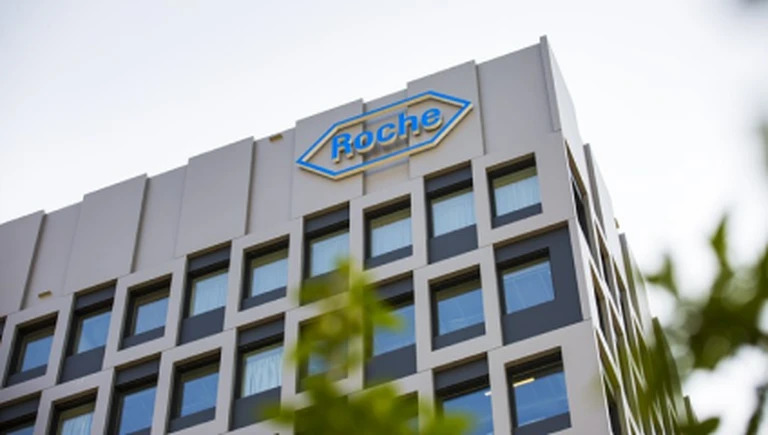On April 14, 2025, Roche announced that the European Commission had approved Columvi® (glofitamab) in combination with gemcitabine and oxaliplatin (GemOx) for the treatment of adult patients who are ineligible for autologous stem cell transplantation (ASCT) due to relapsed or refractory (R/R) diffuse large B-cell lymphoma (DLBCL) not otherwise specified. Those with DLBCL in Europe whose disease has returned or whose original therapy did not work can now access the first bispecific antibody regimen, the Columvi combination. Columvi was granted conditional marketing authorization in July 2023 to treat patients with R/R DLBCL following two or more lines of systemic therapy. A requirement to change the current marketing authorization into a normal approval has also been met, in addition to today’s approval.
Columvi is the first treatment of its kind to improve survival outcomes for people with DLBCL whose cancer has returned after first-line therapy,
With this approval, Columvi can now benefit patients even earlier in their treatment, adding to its existing value as an important treatment for DLBCL.
Levi Garraway
People with R/R DLBCL not eligible for ASCT represent a challenging population, especially those with primary refractory disease or early relapse whose need for a readily accessible and effective therapy is insufficiently addressed globally,
This new Columvi combination is immediately available if a patient’s cancer returns or doesn’t respond to first-line therapy, which is a welcome addition to manage DLBCL.
Franck Morschhauser
The approval is predicated on findings from the pivotal phase III STARGLO trial, which showed that Columvi with GemOx improved overall survival (OS) in patients with R/R DLBCL in a statistically significant and clinically meaningful way when compared to MabThera®/Rituxan® (rituximab) and GemOx (R-GemOx). Patients treated with Columvi plus GemOx had a 41% lower chance of dying than those treated with R-GemOx, according to the primary analysis (performed after a median follow-up of 11.3 months) (hazard ratio [HR]=0.59, 95% CI: 0.40-0.89, p=0.011). With a 63% decrease in the risk of disease worsening or death (progression-free survival, or PFS) as compared to R-GemOx, the Columvi combination also achieved its primary secondary goals (HR=0.37; 95% CI: 0.25–0.55, p<0.0001).
The median OS for patients treated with the Columvi combination was 25.5 months at 12.9 months (HR=0.62, 95% CI: 0.43-0.88), which is over twice as long as the median OS for patients treated with R-GemOx, according to follow-up analyses performed after all patients had finished therapy (median follow-up of 20.7 months). Furthermore, a full response was reported in over twice as many patients (58.5% versus 25.3%, respectively, with a difference of 33.2% [95% CI: 20.9-45.5]). The combination’s safety was in line with the separate medications’ established safety profiles.
DLBCL is one of the most common forms of blood cancer in adults and is an aggressive (quick-growing) lymphoma. An estimated 38,000 persons in Europe receive a DLBCL diagnosis each year. The majority of patients who need further lines of therapy have poor outcomes, and about four out of ten DLBCL patients will relapse following first-line treatment.
DLBCL is one of the most common forms of blood cancer in adults and is an aggressive (quick-growing) lymphoma. An estimated 38,000 persons in Europe receive a DLBCL diagnosis each year. 3, 4 The majority of patients who need further lines of therapy have poor outcomes, and about four out of ten DLBCL patients will relapse following first-line treatment.
Although there have been advancements in second-line treatment, the aggressive nature of DLBCL and difficulties in accessing current medications highlight the urgent need for readily available treatment options that can control the disease and increase survival. When combined with GemOx, Columvi provides a “off-the-shelf” treatment plan that may be easily infused in any situation, allowing patients to begin their next treatment sooner rather than later. Columvi is also made to be administered for a set amount of time, giving patients a goal date for the conclusion of their therapy and the opportunity to go without treatment after that.
Lunsumio® (mosunetuzumab) and Columvi are components of Roche’s industry-leading CD20xCD3 bispecific antibody program. Roche hopes to offer customized treatment options that meet the various needs, preferences, and experiences of patients with blood malignancies as well as healthcare systems, in addition to the clinical development of commercially available allogeneic CAR T-therapies.
STARGLO study
The STARGLO study [GO41944; NCT04408638] is a phase III, multicenter, open-label, randomized study that compares the safety and effectiveness of Columvi® (glofitamab) plus gemcitabine plus oxaliplatin (GemOx) versus MabThera®/Rituxan® (rituximab) plus GemOx in patients with relapsed or refractory diffuse large B-cell lymphoma who have either received two or more prior lines of therapy, or who are not candidates for autologous stem cell transplantation. The STARGLO study was started to investigate the possible complementing effects of the therapy combination after preclinical research showed that combining Columvi with GemOx had a greater antitumor impact than GemOx alone. Safety and tolerability, complete response rate, objective response rate, duration of objective response (secondary endpoints), progression-free survival, and overall survival (primary endpoint) are examples of outcome metrics.
Columvi® (glofitamab)
Targeting CD3 on T cell surfaces and CD20 on B cell surfaces, Columvi is a CD20xCD3 T-cell engaging bispecific antibody. Columvi was created using a brand-new 2:1 structural arrangement. This T-cell engaging bispecific antibody is designed to have two areas that bind to CD20, a protein on B cells that can be either healthy or malignant, and one part that binds to CD3, a protein on T cells, a type of immune cell. By bringing the T cell close to the B cell, this dual-targeting triggers the T cell to release proteins that destroy cancer cells. Along with Lunsumio® (mosunetuzumab), Columvi is a part of Roche’s extensive and industry-leading CD20xCD3 T-cell-engaging bispecific antibody clinical development program, which aims to offer individualized treatment options that meet the various needs, preferences, and experiences of patients with blood cancers as well as healthcare systems. Roche is researching Columvi as a treatment for diffuse large B-cell lymphoma (DLBCL) and mantle cell lymphoma, both alone and in combination with existing medications.
Last Modified:




